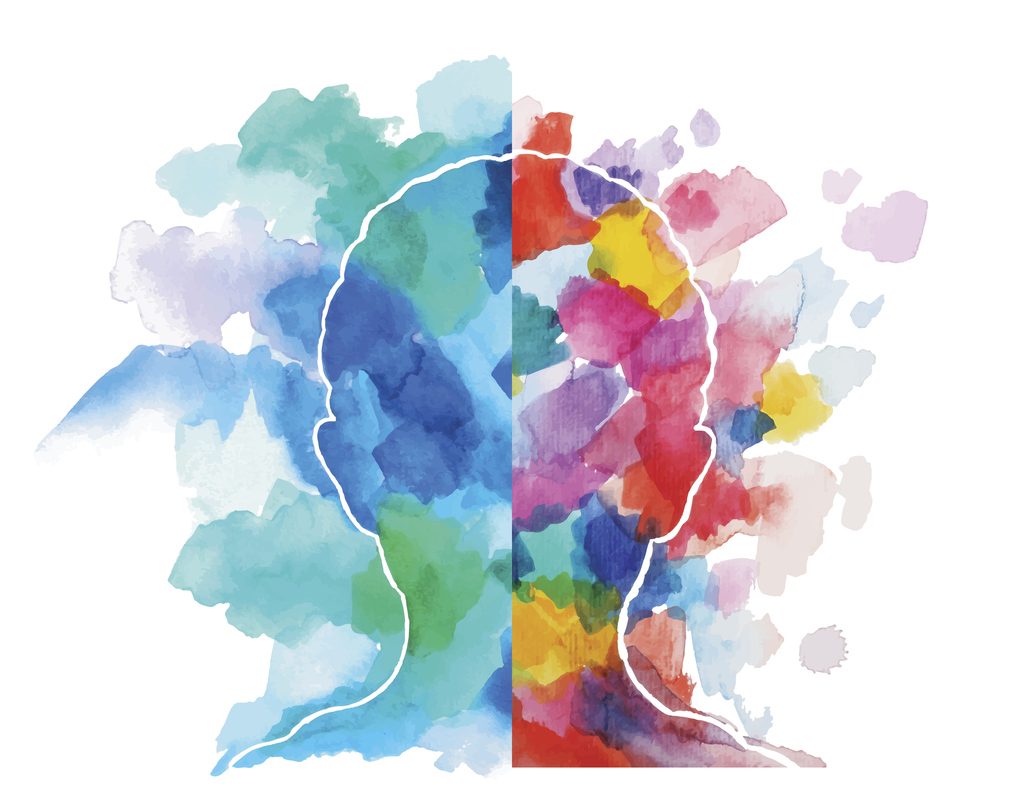Psychology of Color
Color. Like many things in life, it’s something that we often gloss over or take for granted. It’s become so ingrained in our daily lives that we barely give color a second thought. However, brands, manufacturers, and Psychology of color experts know that there’s a hidden world behind those bright hues that consumers love. The burning shade of red on sunglasses and muted battleship gray on electronics tell a story. All we have to do is listen.
All colors have meaning behind them. Of course, it didn’t start out this way. Humans had to develop words and give meaning to color. As we evolved, so did our understanding of color, going from a simple descriptor to a complex source of visual information.
Let’s dive into the origins of color, and how brands can use the psychology of color to their advantage.
 The origins of color’s meaning
The origins of color’s meaning
When we talk about the origin of color, we’re talking about the start of humanity’s relationship with color. Green has always been green, but it didn’t have meaning until humans came along.
Before we could apply symbolism to different colors, we had to name them. What’s odd is that most societies named their colors in the same order. No matter their location on the globe or culture, most humans gave names to black, white, red, green, yellow, and blue in that order.
Why is this the case? We can’t know for sure, but researchers suspect it has to do with how humans experience the color spectrum in our daily lives. The more stark or jarring colors, like white, black, and red were named first. This probably came from our caveman need to survive, when we understood the world in terms of day (white), night (black), and blood or fire (red).
After we named colors, we began to associate them with meanings and moods. For example, we often associate blue as a soothing color because it reminds us of a peaceful sky or a gentle lake. Green is associated with the forest and eco-friendly living because it reminds us of green plants. Red gets us excited because it’s the color of fire–it naturally calls us to action, even though we often don’t realize why.
Color’s powerful message
Because color appeals to our most basic animal instincts, it conveys powerful messages without saying a word. However, color doesn’t have a universal meaning, and its meaning can often change depending on the context. Color meaning varies based on your location, culture, politics, and religion. For example, many Americans think of white as an innocent, pure color. But in Asia, white is a color associated with death.
It’s important to keep these differences in mind when we talk about the psychology of color: remember that it can change depending on your audience. Here are the common meanings associated with color in the United States.
Black
Black is a color that has a variety of meanings, depending on how it’s used. It can symbolize evil or malice, or it can show sophistication, mystery, and elegance.
White
White symbolizes purity, light, and goodness. It’s also used to show cleanliness and simplicity.
Red
This rich hue reminds humans of blood and fire. It’s a color associated with passion, danger, and energy.
Orange
Orange isn’t considered as intense as red, but it still communicates energy and intense joy. It’s often used to symbolize action, heat, quirkiness, and creativity.
Yellow
Known as the sunshine color, yellow is associated with happiness and livelihood. It’s used to symbolize cheer, attention, and youth.
Green
We associate green with all things environmental. While it can be used in a literal sense for symbolizing nature, it can also be used to communicate growth or to give the all-clear.
Blue
Blue is most people’s favorite color. It symbolizes trust, cleanliness, and intelligence. It’s a popular choice for company branding, especially in darker shades.
Purple
The child of red and blue, purple symbolizes luxury and wealth. It’s often used to create an aura of mystery.
How businesses can leverage color
Blue is much more than the color of the sky. When used thoughtfully, it can turn your customers’ heads and make a real impact on your business. In today’s world, businesses and brands have learned to use color to their advantage.
To see smart color psychology in action, look no further than the food industry. Restaurants like McDonald’s and Wendy’s use yellow and red everywhere in their branding, and it’s no accident. These colors are proven to grab customers’ attention, and even make them feel hungry. On the flipside, coffee giant Starbucks evokes a mood of calm and coolness with its green, white, and brown branding.
Color is a big deal not only for your business’s brand, but also its products. Did you know that nearly 93 percent of customers buy a product based on its color? Customers make purchasing decisions in just seconds, and they’re based almost entirely on the power of color psychology. Here’s how your business can leverage the powerful psychology of color to get ahead. Use these tips to make color a critical part of your positioning.
Brand with color first
We know how much thought goes into creating a company, products, and services. Be sure to make color a critical part of your branding discussion. This keeps your brand message consistent and appealing to your audience.
Make sure to pick colors that make sense for your company. For example, if your company is shaking up a traditional space, skip the dark blue tones and go for something that suits your revolutionary image, like orange.
Make it emotional
Humans are ruled by our emotions, not facts. This is something that brands need to tap into for more effective packaging, branding, and marketing. But just how do you convey emotion with color? It depends on the meaning you want to convey.
Color, and even the absence of color, can show your audience where to focus their eye. For example, the movie Schindler’s List is famous for its use of black and white and the girl in the red coat.
Flip the meaning
There are rules for color psychology, but sometimes rules are meant to be broken. If you’re marketing to women, for example, it’s cliché to produce products with pink and lavender. Don’t be afraid to shake things up and get creative with color choices–as long as it fits your brand, of course. Color outside the lines and use color in new, innovative ways.
The bottom line
Color is the building block of human meaning. It plays an important role in every aspect of our lives, from keeping us safe while driving to influencing what shampoo we buy. Brands and manufacturers should have a keen grasp of the psychology of color to communicate more clearly to customers. Use the power of color to stand out from the pack.








